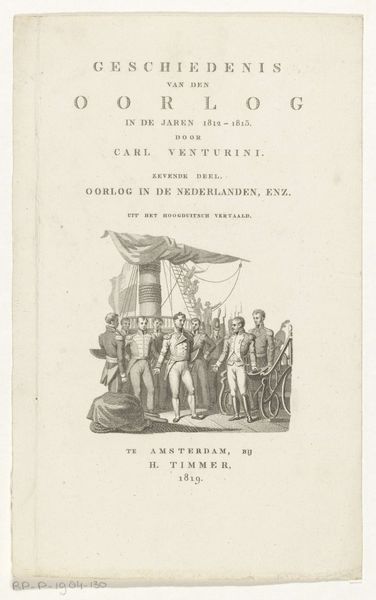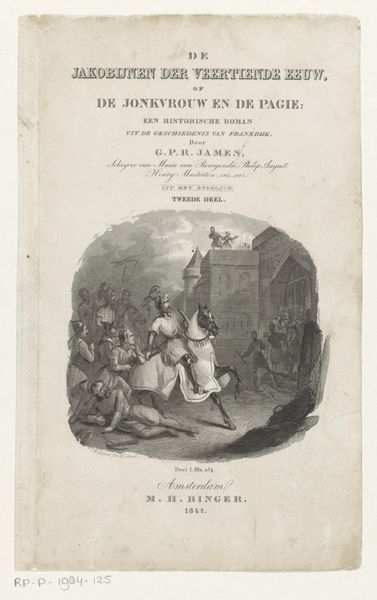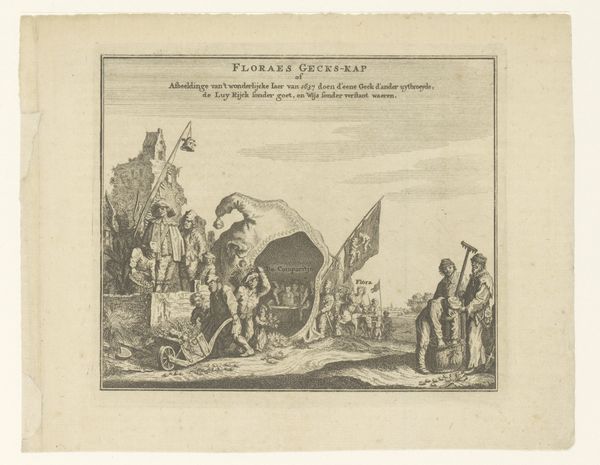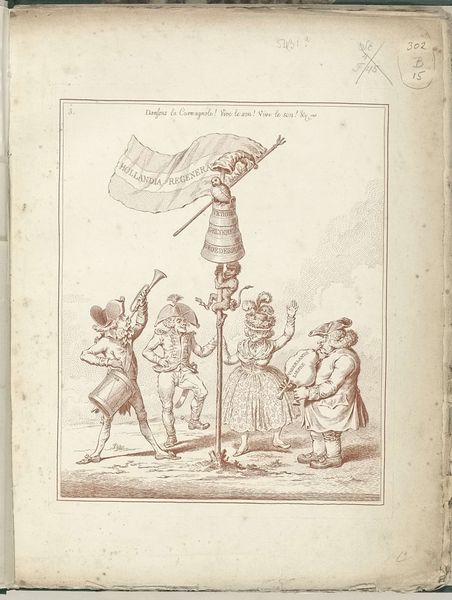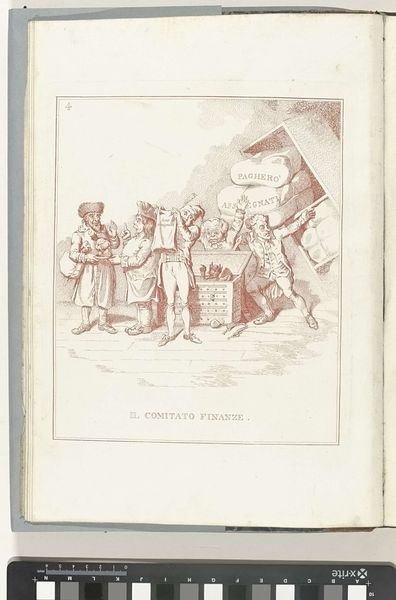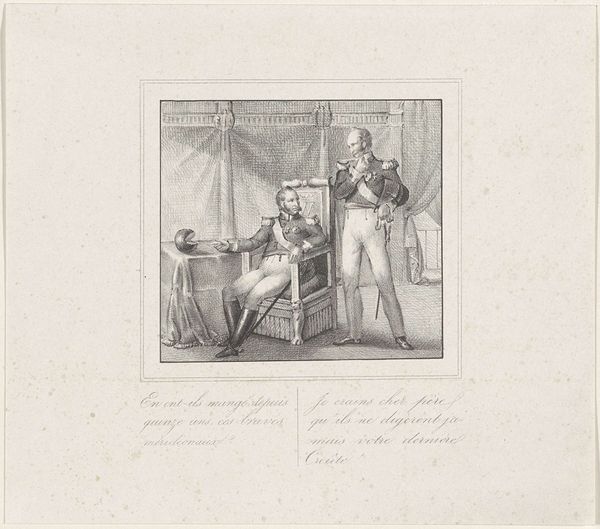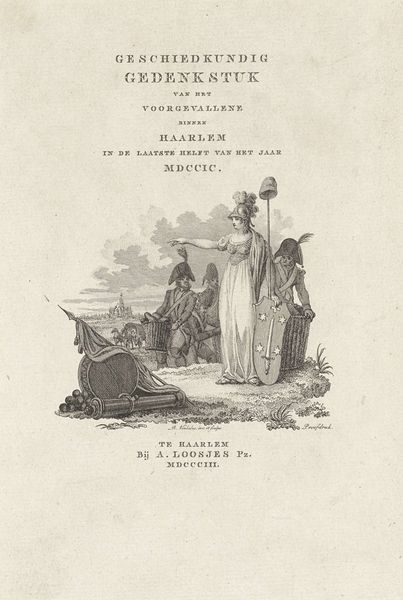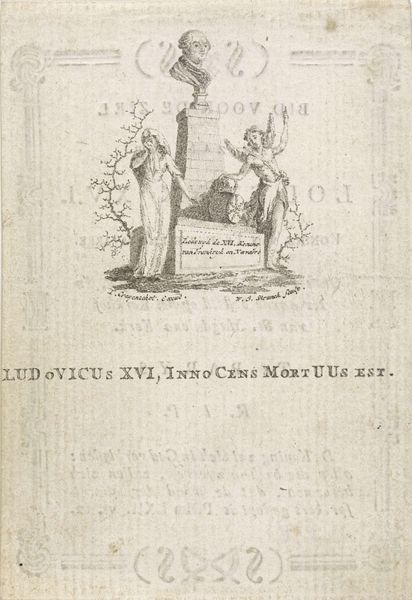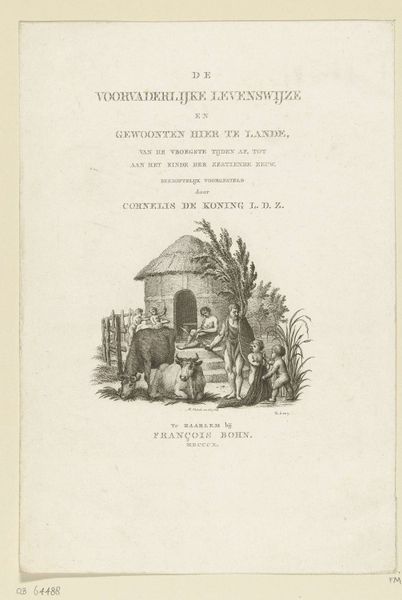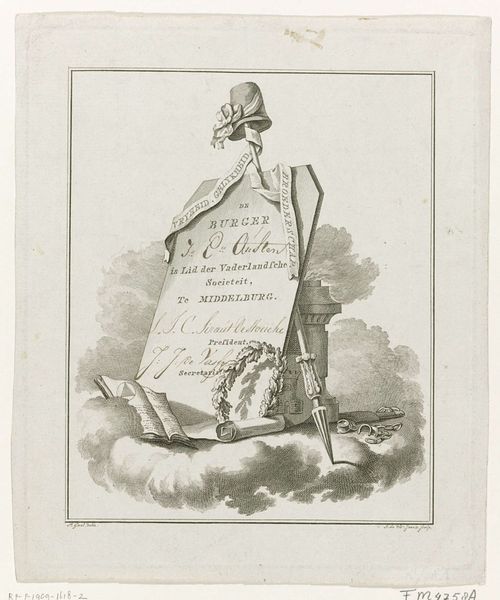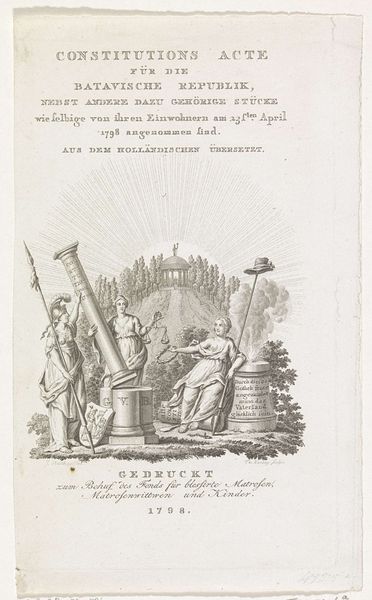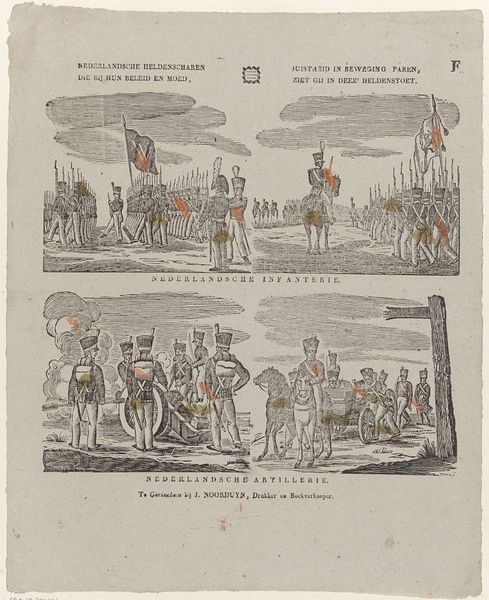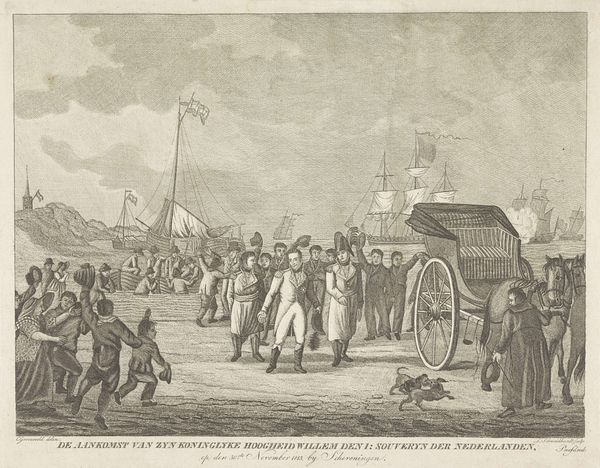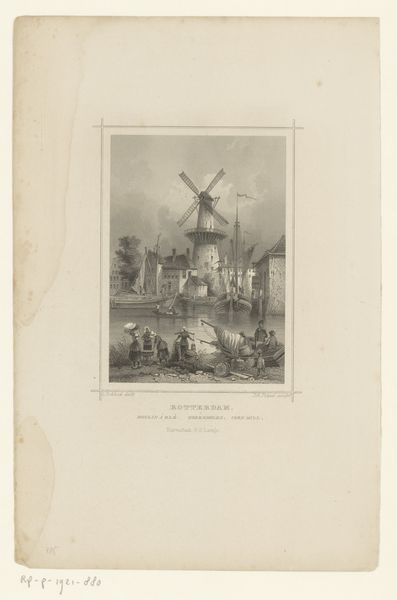
drawing, print, metal, engraving
#
drawing
#
neoclacissism
# print
#
metal
#
column
#
pen-ink sketch
#
history-painting
#
engraving
Dimensions: height 229 mm, width 145 mm
Copyright: Rijks Museum: Open Domain
Curator: This print by Philippus Velijn, made in 1818, is titled "Vlag op Colonne Vendôme te Parijs," which translates to "Flag on the Vendôme Column in Paris." It’s currently held in the Rijksmuseum. Editor: My immediate reaction is one of restrained monumentality. The scene, though intricate in its details, is rendered in subdued tones, evoking a sense of quiet solemnity rather than bombastic celebration. There's a formality to the composition; the figures are carefully arranged around the column. Curator: Indeed. The Vendôme Column itself holds significant symbolic weight. Erected by Napoleon to commemorate his victories, it became a potent symbol of French imperial power. Velijn's print captures a specific moment of upheaval: the removal of the French flag from the column, signifying a shift in political power. It’s an engraving, which lends itself well to capturing that level of detail, especially in rendering the faces and uniforms. Editor: Yes, the artist's control of line and form creates a complex interplay of light and shadow. Notice how the building in the background becomes almost ghostlike through subtle changes of texture. The column serves as a stark focal point, contrasting with the bustle and implied movement of the foreground figures. Curator: The surrounding figures represent various social classes, offering a glimpse into the multifaceted relationship between the French populace and the memory of the Napoleonic era. Observe, too, the meticulous detail afforded the rendering of clothing. These visual details act as anchors of history. Editor: It's quite intriguing to analyze the composition's implicit semiotics. The column, as the main figure in the foreground, almost imposes itself upon the witnesses in the front. However, in a subtle way, the image almost invites you to analyze what its function really is, since the details almost force one to become observant to details in both the foreground and background. Curator: Precisely, that’s what this print invokes: layers of understanding about collective memory and ideological representation. Editor: Ultimately, I find that Velijn’s print is more than just an illustration; it offers a fascinating visual perspective on history. Curator: Absolutely; viewing historical prints helps to gain clarity concerning social changes in this particular time period.
Comments
No comments
Be the first to comment and join the conversation on the ultimate creative platform.
